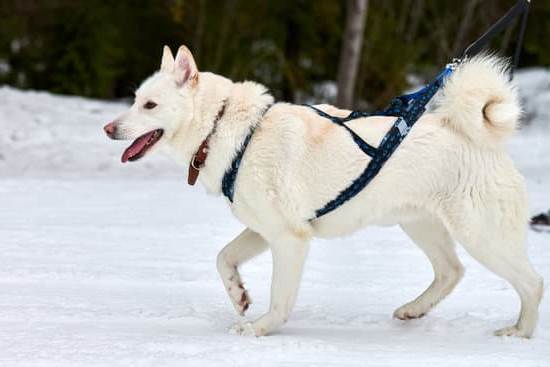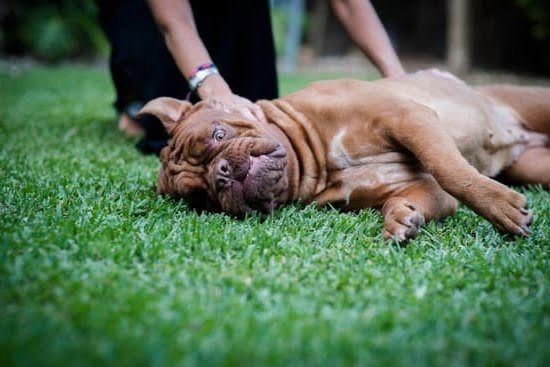Are you wondering how to begin scent work training your dog? Scent work is an excellent way to engage your dog’s natural instincts while providing mental and physical stimulation. This article will guide you through the process of getting started with scent work training for your furry friend.
Scent work training for dogs is not just a fun activity; it also has numerous benefits for both you and your pet. It taps into their primal hunting instincts and provides a constructive outlet for their energy. Additionally, scent work can help build confidence, improve focus, and strengthen the bond between you and your dog.
Before delving into the specifics of scent work training, it’s essential to understand the incredible capabilities of a dog’s sense of smell. Dogs have an extraordinary sense of smell, which is estimated to be at least 10,000 times more acute than that of humans. Understanding this aspect is crucial in appreciating the potential for scent work training in stimulating your dog’s mind and fulfilling their natural instincts.
Understanding the Dog’s Sense of Smell
The Power of a Dog’s Sense of Smell
Dogs have an incredibly powerful sense of smell, one that is far superior to that of humans. It is estimated that a dog’s sense of smell is between 10,000 to 100,000 times more acute than ours.
This amazing ability allows dogs to not only detect various scents but also to differentiate them and follow scent trails, making them ideal candidates for scent work training. Understanding just how crucial a dog’s sense of smell is will help you appreciate the importance of scent work training for your furry friend.
The Science Behind a Dog’s Sense of Smell
A dog’s nose contains up to 300 million olfactory receptors, compared to about six million in humans. Additionally, the part of a dog’s brain that is dedicated to analyzing smells is about 40 times greater than ours in proportion to size.
This means that their ability to process and interpret scent information far exceeds our own capabilities. By understanding the biological and physiological aspects of a dog’s sense of smell, you can develop a deep appreciation for their incredible talent and can harness it through proper training techniques.
Utilizing a Dog’s Olfactory Abilities
Given a dog’s exceptional olfactory abilities, it becomes clear why scent work training can bring so much fulfillment and mental stimulation for them. Engaging in this type of activity provides dogs with an outlet for their natural instinctive behavior while also deepening the bond between dog and owner.
By tapping into their olfactory abilities, you are providing your canine companion with an enriching experience that not only satisfies their primal instincts but also provides mental stimulation and promotes overall well-being.
Choosing the Right Training Equipment for Scent Work
Scent work training is a fascinating and essential activity for dogs, as it taps into their natural ability to use their sense of smell to locate items or detect scents. When embarking on scent work training for your dog, it’s crucial to choose the right equipment to ensure the success and effectiveness of the training process. Here are some essential pieces of equipment you will need:
- Scent containers: These are small, airtight containers where you can place different scents for your dog to search for during training. You can use metal tins, plastic tubes, or any other small container that can hold the scent effectively.
- Scent aid: This is the actual scent that you want your dog to detect during training. Common examples include essential oils such as birch, anise, clove, and cypress. It’s important to choose scents that are safe for dogs and suitable for scent work training.
- Training aids: Consider using training aids such as target odors or scent boxes to help your dog become familiar with identifying specific scents. These aids can assist in teaching your dog how to signal when they find the desired scent.
- Reward treats: High-value treats or toys are essential for rewarding and reinforcing your dog’s behavior when they successfully locate the target scent during training sessions. Make sure to choose treats that your dog finds highly motivating and enjoyable.
In addition to these key pieces of equipment, it’s important to have a well-fitted harness or collar and a long line leash for safety and control during scent work training sessions. Using high-quality, reliable equipment will not only enhance the efficiency of your dog’s training but also ensure their safety and comfort throughout the process.
Ultimately, choosing the right training equipment for scent work is crucial in creating a positive and successful learning experience for your dog. By investing in quality tools and materials, you’ll be setting up your canine companion for an enriching journey into the world of scent detection and nose work.
Basic Commands and Techniques for Scent Work Training
When starting scent work training with your dog, it’s essential to begin with some basic commands and techniques to lay the foundation for more advanced training. The “Find It” command is a crucial part of scent work training, as it teaches your dog to actively search for a specific scent.
To start this command, place a treat or scented item in an easy-to-find location, then encourage your dog to find it using the verbal cue “Find It.” Once your dog understands the command, gradually increase the difficulty by hiding the item in more challenging spots.
Another important technique in scent work training is teaching your dog how to indicate when they’ve found the target scent. This can be done using a variety of methods such as sitting or laying down when they find the source of the scent. By consistently practicing this technique during training sessions, you’ll be able to establish a reliable indication from your dog when they’ve successfully located the target scent.
In addition to commands and techniques, it’s crucial to use positive reinforcement during scent work training. Whether through treats, praise, or playtime, rewarding your dog for successful searches will help reinforce their understanding of what is expected from them during scent work training.
This positive reinforcement helps maintain their motivation and engagement during training sessions while also strengthening their bond with you as their trainer. With these basic commands and techniques in place, you can effectively build upon them as you progress into more advanced levels of scent work training with your dog.
Setting Up a Scent Work Training Area at Home
Creating a dedicated scent work training area at home is crucial for the success of your dog’s training. This space ensures that both you and your dog have a consistent and controlled environment for practice. When choosing an area, consider a location that is free from distractions and has enough room for your dog to move around comfortably. Additionally, this area should be easily accessible for frequent use.
One important aspect of setting up a scent work training area is ensuring safety for your dog. Remove any hazardous items or substances that may harm your pet during the training sessions. It’s also crucial to make sure the area is well-ventilated and comfortable for your dog to spend extended periods in.
Having the right tools and equipment in the training area is essential. Necessary supplies include scent containers, reward treats, leash, harness, toys, and cleaning supplies. These items help create an engaging and positive environment that encourages your dog’s participation in the training process.
Lastly, maintain consistency in the setup of the training area to provide predictability for your dog as they familiarize themselves with this space. By doing so, you will help build their confidence and comfort level with performing scent work tasks at home.
| Aspect | Details |
|---|---|
| Location | Free from distractions and ample space |
| Safety Measures | Remove hazards, ensure ventilation |
| Equipment | Scent containers, reward treats, leash, harness, toys, cleaning supplies |
| Maintenance | Consistency in setup for predictability |
Introducing Scent Work to Your Dog
If you’re interested in starting scent work training with your dog, it’s important to carefully introduce this new activity. Here is a step-by-step guide to help you effectively introduce scent work to your furry friend:
1. **Choose the Right Scent** – Start by selecting a specific scent for your dog to search for. This can be anything from essential oils, to specific herbs or spices. Make sure it’s a scent that your dog doesn’t encounter regularly in their day-to-day life.
2. **Introduce the Scent** – Once you have chosen the scent, introduce it to your dog by letting them sniff it for a few seconds. You can do this by placing the scent on a cotton pad or small piece of fabric and allowing your dog to sniff it.
3. **Pair the Scent with Positive Reinforcement** – After introducing the scent, pair it with something positive such as treats or praise. This helps create a positive association with the scent and encourages your dog’s interest in finding it.
Remember that patience is key when introducing new training activities to your dog. Take the time to allow your furry friend to become familiar with the new concept before moving on to more advanced techniques and challenges in scent work training.
Troubleshooting Common Challenges in Scent Work Training
Addressing Distractions
One common challenge in scent work training is dealing with distractions. Dogs can easily get sidetracked by other scents, noises, or movements in the environment. To address this, it’s important to gradually introduce distractions while training. Start with minimal distractions and gradually increase the level as your dog progresses. Use positive reinforcement techniques to redirect your dog’s focus back to the target scent.
Dealing With Frustration
Another challenge is managing frustration, both for the dog and the handler. If your dog becomes frustrated during training, take a break and try again later. It’s important not to push your dog too hard, as this can lead to negative associations with scent work training. Stay patient and provide plenty of encouragement and rewards for small successes.
Ensuring Accuracy
Maintaining accuracy in scent work training can also be a challenge. Dogs may have difficulty pinpointing the exact location of the target scent, especially in complex environments. To address this challenge, practice using different search patterns and techniques. Provide clear cues to help guide your dog to the source of the scent, and be sure to reward accurate indications.
By addressing these common challenges in scent work training, you can set your dog up for success and make the overall training experience more enjoyable for both you and your canine companion. Remember that every dog is unique, so be flexible and patient as you work through these challenges together.
Advancing to Advanced Levels in Scent Work Training
Once your dog has mastered the basics of scent work training, you may want to consider advancing to more advanced levels. This can provide mental stimulation and enrichment for your dog, as well as enhance their natural abilities. Advanced levels of scent work training can include more complex search scenarios, longer durations of searching, different types of environments, and the introduction of multiple scents for your dog to identify.
As you progress to advanced levels in scent work training, it is important to continue building on the foundation that you have already established with your dog. This means reinforcing their understanding of basic commands and techniques, while also introducing new challenges and elements to keep them engaged. It is essential to maintain a positive and encouraging environment for your dog throughout this process, as advanced scent work training can be mentally demanding.
To advance in scent work training, consider seeking guidance from experienced trainers or instructors who specialize in this area. They can provide valuable insight into how to push your dog’s abilities further while ensuring that they are continuously learning and developing their skills. Additionally, connecting with other scent work enthusiasts and participating in organized competitions or events can help expose your dog to new challenges and experiences in a supportive setting.
The Benefits of Scent Work Training for Dogs
Scent work training for dogs offers a wide range of benefits for both the dog and its owner. One of the primary advantages is that it provides mental stimulation for the dog, which is essential for preventing boredom and destructive behaviors. Dogs have a natural instinct to hunt and use their sense of smell, so scent work training allows them to fulfill this instinct in a controlled and rewarding way.
In addition to mental stimulation, scent work training also helps to build a stronger bond between the dog and its owner. The collaborative nature of scent work requires clear communication and trust between the two, leading to a deeper connection. This kind of training also boosts the dog’s confidence as it learns to use its natural abilities to accomplish tasks, making it an excellent way to build self-esteem in shy or anxious dogs.
Furthermore, scent work training can be physically demanding for dogs, depending on the complexity of the tasks involved. This type of exercise is beneficial for their overall health and can contribute to weight management. Additionally, scent work can help reduce behavioral problems by providing an outlet for excess energy and giving dogs a sense of purpose.
| Benefits | Description |
|---|---|
| Mental Stimulation | Prevents boredom and destructive behaviors. |
| Bonding | Strengthens the bond between dog and owner through clear communication. |
| Physical Exercise | Contributes to overall health and weight management. |
Recommended Resources for Scent Work Training Instruction
In conclusion, scent work training is an incredibly beneficial activity for dogs that taps into their natural instincts and provides mental and physical stimulation. It’s important for dog owners to understand the significance of scent work training and how it can greatly improve their pet’s overall well-being. By engaging in scent work training, dogs are able to utilize their incredible sense of smell while also strengthening the bond with their owners.
As you progress in your scent work training journey with your dog, it’s essential to access valuable resources that can further guide and enhance the experience. Whether it’s books, online courses, or professional trainers, there are numerous resources available to help both you and your furry friend succeed in scent work training. These resources can provide expert advice, innovative techniques, and continuous support as you advance through different levels of training.
In addition to being a fun activity for both dogs and owners, scent work training also has various practical benefits. From improving obedience and focus to providing mental enrichment for dogs, this type of training offers a range of advantages.
It not only keeps dogs physically active but also stimulates their cognitive abilities, making it an ideal way to keep them happy and healthy. Ultimately, engaging in scent work training with your dog can lead to a more fulfilling and rewarding relationship between you and your beloved pet.
Frequently Asked Questions
How Do I Start Training for Scent Work?
Starting training for scent work involves first understanding the concept of the activity and its purpose. It’s important to begin by introducing the dog to a specific target scent and teaching them to recognize it. The training process typically includes introducing the scent, using positive reinforcement, and gradually increasing the difficulty of finding the scent in various environments.
What Age Can Dogs Start Scent Training?
Dogs can start scent training at any age, including puppies as young as a few months old. However, it’s important to tailor the training exercises to match the dog’s developmental stage and maturity level.
For younger dogs, the focus may be on getting them familiar with scents and starting with simple search tasks before advancing to more complex scent work.
What Are 4 Scents for Smell Training Dogs?
There are various scents used for smell training dogs, but some common ones include birch, anise, clove, and cypress. These scents are often used in activities like nose work or scent detection training because they are distinct and easily recognizable by dogs.
Each of these scents presents a unique challenge for dogs to identify and follow, making them ideal for building a canine’s olfactory skills.

Welcome to the blog! I am a professional dog trainer and have been working with dogs for many years. In this blog, I will be discussing various topics related to dog training, including tips, tricks, and advice. I hope you find this information helpful and informative. Thanks for reading!





